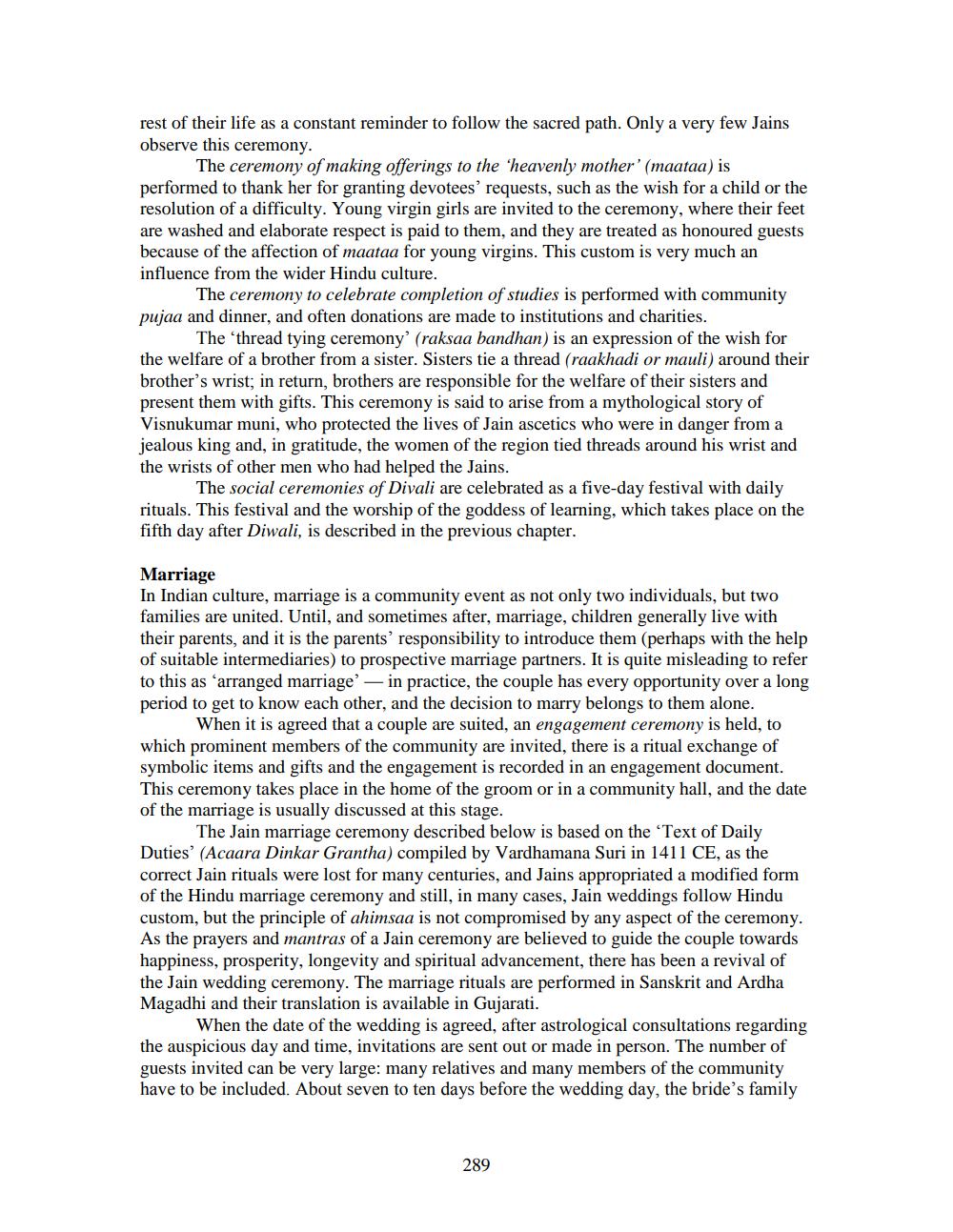________________
rest of their life as a constant reminder to follow the sacred path. Only a very few Jains observe this ceremony.
The ceremony of making offerings to the 'heavenly mother' (maataa) is performed to thank her for granting devotees' requests, such as the wish for a child or the resolution of a difficulty. Young virgin girls are invited to the ceremony, where their feet are washed and elaborate respect is paid to them, and they are treated as honoured guests because of the affection of maataa for young virgins. This custom is very much an influence from the wider Hindu culture.
The ceremony to celebrate completion of studies is performed with community pujaa and dinner, and often donations are made to institutions and charities.
The 'thread tying ceremony' (raksaa bandhan) is an expression of the wish for the welfare of a brother from a sister. Sisters tie a thread (raakhadi or mauli) around their brother's wrist; in return, brothers are responsible for the welfare of their sisters and present them with gifts. This ceremony is said to arise from a mythological story of Visnukumar muni, who protected the lives of Jain ascetics who were in danger from a jealous king and, in gratitude, the women of the region tied threads around his wrist and the wrists of other men who had helped the Jains.
The social ceremonies of Divali are celebrated as a five-day festival with daily rituals. This festival and the worship of the goddess of learning, which takes place on the fifth day after Diwali, is described in the previous chapter.
Marriage
In Indian culture, marriage is a community event as not only two individuals, but two families are united. Until, and sometimes after, marriage, children generally live with their parents, and it is the parents' responsibility to introduce them (perhaps with the help of suitable intermediaries) to prospective marriage partners. It is quite misleading to refer to this as 'arranged marriage'-in practice, the couple has every opportunity over a long period to get to know each other, and the decision to marry belongs to them alone.
When it is agreed that a couple are suited, an engagement ceremony is held, to which prominent members of the community are invited, there is a ritual exchange of symbolic items and gifts and the engagement is recorded in an engagement document. This ceremony takes place in the home of the groom or in a community hall, and the date of the marriage is usually discussed at this stage.
The Jain marriage ceremony described below is based on the 'Text of Daily Duties' (Acaara Dinkar Grantha) compiled by Vardhamana Suri in 1411 CE, as the correct Jain rituals were lost for many centuries, and Jains appropriated a modified form of the Hindu marriage ceremony and still, in many cases, Jain weddings follow Hindu custom, but the principle of ahimsaa is not compromised by any aspect of the ceremony. As the prayers and mantras of a Jain ceremony are believed to guide the couple towards happiness, prosperity, longevity and spiritual advancement, there has been a revival of the Jain wedding ceremony. The marriage rituals are performed in Sanskrit and Ardha Magadhi and their translation is available in Gujarati.
When the date of the wedding is agreed, after astrological consultations regarding the auspicious day and time, invitations are sent out or made in person. The number of guests invited can be very large: many relatives and many members of the community have to be included. About seven to ten days before the wedding day, the bride's family
289




